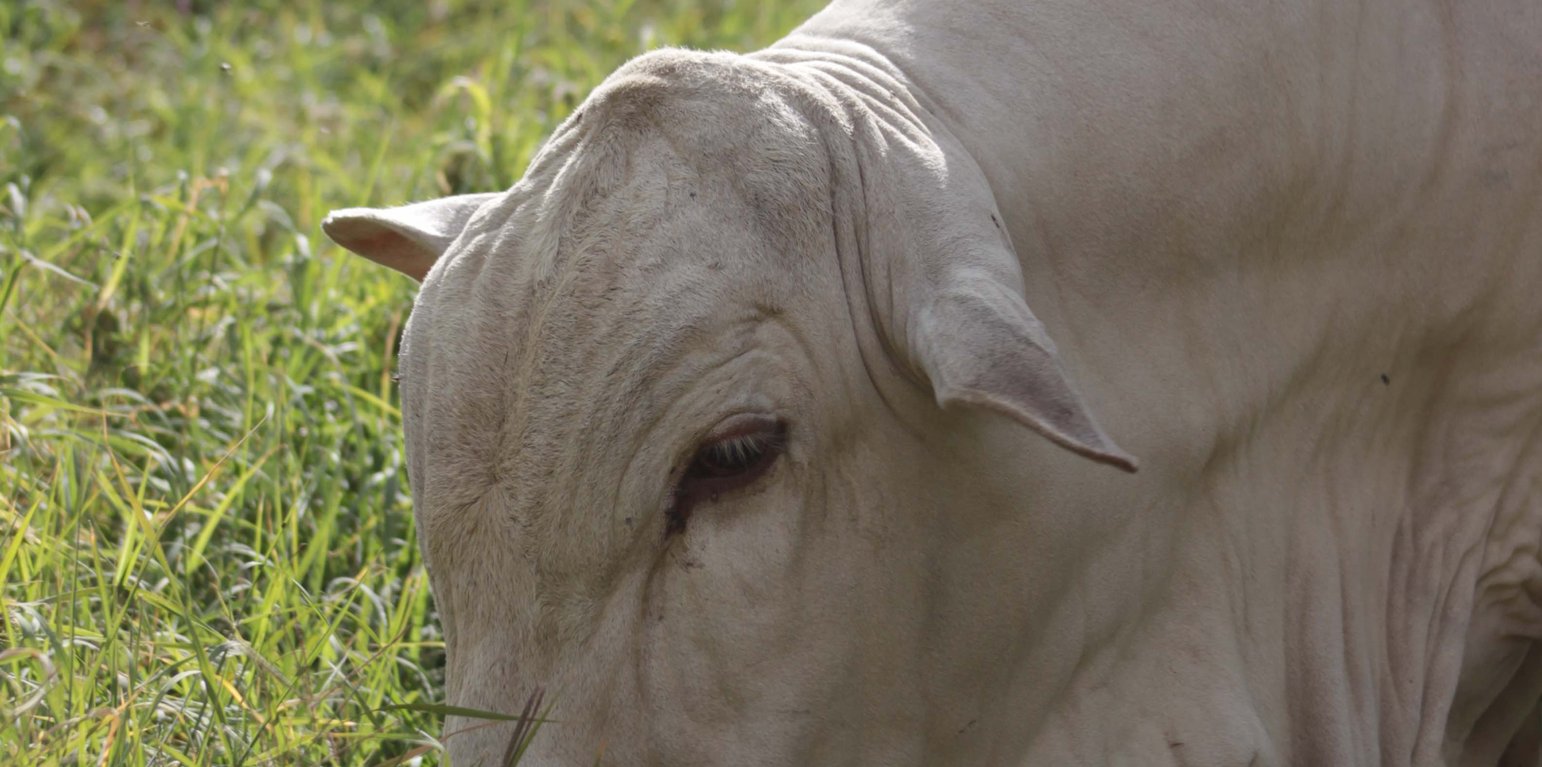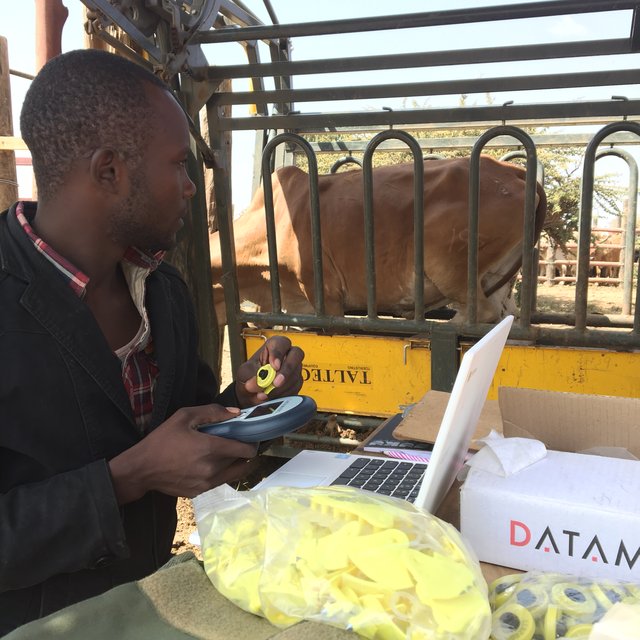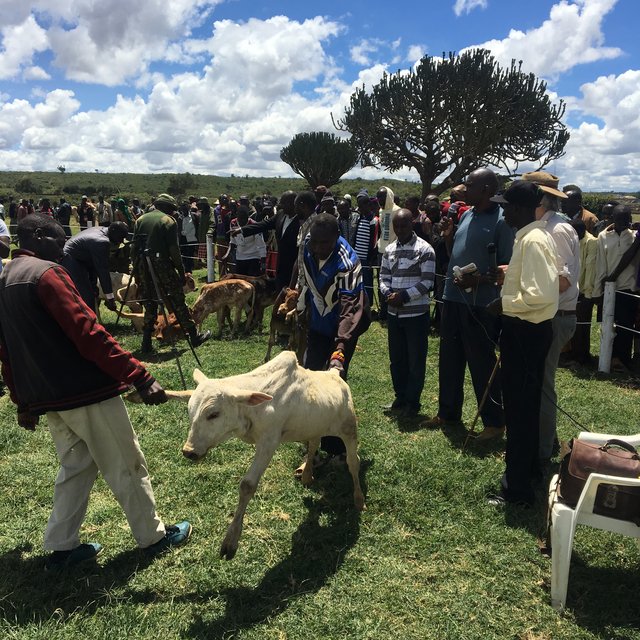



Mugie conservancy is a private company covering nearly 20,000 hectares. It is involved in ecotourism, wildlife conservation and livestock production. Simultaneously, Mugie cooperates with community members surrounding the conservancy by fattening and marketing their cattle. Both parties share in the risks and successes of the initiative – and this is key to building trust. Community livestock owners ‘resource share’ in the program by supplying selected animals in line with standards and a quota stipulated by the conservancy. Currently the cattle are weighed and graded at the conservancy headquarters, but a purpose-built facility on the edge of the conservancy is being constructed for this purpose.
While the conservancy manages the livestock from the community, there is a joint stake in the livestock as the eventual profits are divided. The conservancy takes over full management of the livestock from the community members including herding and grazing, dipping, providing veterinary treatment, monitoring weight, marketing and sales. The division and remittance of funds generated is according to the contract agreed with the community committee. Contracts vary in nature and are often no more than just verbal agreements based on trust. The original owners have visiting rights on Saturdays during weighing and the spray-race, where they inspect their animals and interact with conservancy livestock staff.
The program aims to build value chains, encourage livestock businesses and the local economy through provision of a fair price market for local communities’ products. It also strives to build peace across communities and ethnicities - there is no room for fighting when talking business. Developing market-based incentives to produce better quality livestock is another aim, thus stimulating improved rangeland management and a higher standard of animal husbandry. It is also hoped to build a sustainable livestock business for the conservancy to pay for its wildlife and biodiversity conservation efforts - because conservation doesn’t pay for itself and tourism is volatile, and can’t cover conservations costs in most situations.
The total turnover of the program to-date (April 2018) is approx. US $ 825,000. The conservancy takes 10% of the sales, plus US $ 4.00 per animal per month to cover grazing, animal health and management. Cattle are sold live to various brokers and dealers, depending on the market conditions and the quality of the cattle.
This process of community participation and partnership building is nurtured and reinforced in various ways: (i) through continuous outdoor meetings (updates on changes needed to agreements; requirements for livestock; updating on conditions of the market; talking about the need to maintain a supply of high quality livestock through better rangeland management, etc.); (ii) by development of community committees; (iii) establishing community SACCOs (co-operatives registered with the county government); and (iv) drawing up contracts between the committees and the conservancy.
The implementation of this approach is an ongoing, dynamic and ever-evolving process. However the broad sequence is as follows: (i) introduction of the approach to communities, encouraging them to embrace the idea of improving livestock quality and to enter into an agreement with the conservancy, (ii) formation of committees within the community to ensure that livestock owners are heard and can agree the value of livestock, as well as avenues for communication, complaints and negotiations, (iii) negotiation of contracts with these committees, covering revenue sharing and proposed number of livestock involved, (iv) livestock management, fattening and marketing by Mugie conservancy, (v) continuous monitoring and reviews.
As implementation progresses there are also breeding schemes to introduce better genetic material into community livestock. These improved breeds produce cattle of higher quality for the beef market. Ongoing education and an annual agricultural show increase the potential and awareness of sustainable range management approaches and opportunities to all members of surrounding communities, including livestock producers: men, women and the youth.
Байршил: Louniek region, Laikipia, Кени
Эхлэх огноо: 2017
Төгсөх жил: тодорхойгүй
Арга барилын төрөл

| Ямар оролцогч талууд / хэрэгжүүлэгч байгууллагууд арга барилд оролцож байсан бэ? | Оролцогч талуудыг тодорхойлно уу | Оролцогч талуудын үүргийг тайлбарлана уу |
| Орон нутгийн газар ашиглагч / орон нутгийн иргэд | Land and livestock owners from the immediate area surrounding the private conservancy (from the Pokot, Samburu & Turkana tribes). | Local land users/communities make committees to allocate quotas of livestock to come in to the MTS resource sharing and livestock-to-market program. It is also their responsibility to continue to bring suitable animals for the program. The committees are those to communicate changes and updates to the terms of agreement to the wider community and to help mediate in disputes. |
| олон нийтэд түшиглэсэн байгууллагууд | Chemiot SACCO - a Pokot youth cooperative set up in the wake of starting the MTS scheme. | Mugie wishes to encourage the development of strong institutions in the area. Mugie hopes increasingly to deal with SACCOs as opposed to committees. |
| ГТМ-ийн мэргэжилтэн/ хөдөө аж ахуйн зөвлөх | RPLRP (Regional Pastoralist Livelihoods Resilience Program) and NDMA (National Drought Management Authority). | Currently, these stakeholders have shown an interest in the project and wish to see how it can be scaled up. |
| Судлаачид | Masters and Doctorate students | There has been a little interest from these stakeholders in using the information and databases developed by Mugie. However there has been no feedback and little uptake from them. |
| Хувийн хэвшил | Mugie Conservancy, various Mugie Trade partners. | To manage the livestock, to finish (fatten) them for the market, market the livestock, remit funds from sales, manage the contracts, provide education on improved rangeland management and animal husbandry. Trade partners provide other inputs and access to markets. |
| Орон нутгийн захиргаа | Laikipia County Government, Samburu County Government, Baringo County Government | The respective county governments have shown interest in supporting and further developing the MTS program in order to help develop strong institutions, economy, businesses opportunities and rehabilitate rangelands for better livelihoods in the Amaya Triangle area. |
Шийдвэр гаргасан этгээд
Шийдвэр гаргах үндэслэл нь
Grazing management, rangeland management (planning), Lifecycles of plants, water cycling, solar cycling, mineral cycling, importance of suitable breeds, market awareness, forming (SACCO), Basic business planning.
Project developers from Mugie.
Microchipping for Electronic identification of cattle from Kenya Vetinary Association (KVA)
Газар ашиглагчаас гаргасан хөдөлмөр хүчний зардал
Local landowners have a financial market based incentive to protect the main conservation area and increase/explore rehabilitation efforts on their own land.
Detailed records were kept from the beginning and consulted as evidence for changes to the approach as the program developed
The program is still relatively new - but there has been strong evidence of changing attitudes towards better rangeland management.
The proper management of cattle is helping to manage grasses and reduce the burden on overgrazed areas within the landscape.
Funding for this has yet to be provided for the area.
Considerable training has been carried out and discussions have been held with all of the communities surrounding the main conservation area of Mugie, greatly increasing their knowledge - capacity however relies upon security, access to market incentive to implement SLM and above all security of resources and land tenure.
Training of, and discussions with, other stakeholders have taken place too, raising wider awareness of the major issues and driving causes of rangeland degradation in the area.
Yes, and continues to do so. The approach shows and provides a framework for further cooperation in economic development, peace building and education as well as sustainable land management and safeguarding of biodiversity.
It has led to great stability in the area and opened up lines of dialogues between different communities, ethnicities, areas, and local government.
The approach has allowed socially and economically disadvantaged groups to benefit from the administration and financial services from Mugie Conservancy and has enabled investments that have shown as much as 37% return on investments for socially and economically disadvantaged groups that otherwise would never have happened.
Although this impact has been small, now that trust with communities has been built, further resource sharing products are being developed within the approach to target these groups specifically.
The Mugie Rangeland and Pastoralist Show (an agricultural show for pastoralists) welcomes all the family and makes them aware of the issues and potential for change through SLM technologies and approaches.
This lies within the government's power to change. However, there is a lack of understanding of what the problem actually is, even from local and national government.
Not yet, but as the approach goes forward. Those participating from more affluent social groups will be charged a premium. This will be used for extension services that improve these areas. Education is being given around the potential for communities to develop their own local water cooperatives.
By providing basic financial services, land users can start guaranteeing funds and plans available for climate related disasters. The education and knowledge being provided also increases this capacity, and the off take of animals to finish on managed rangeland for market provides resilience all year round regardless of drought.
There has been a huge injection of funds into the area through this approach. Employment has also increased through the scheme and can continue to do so as it grows.